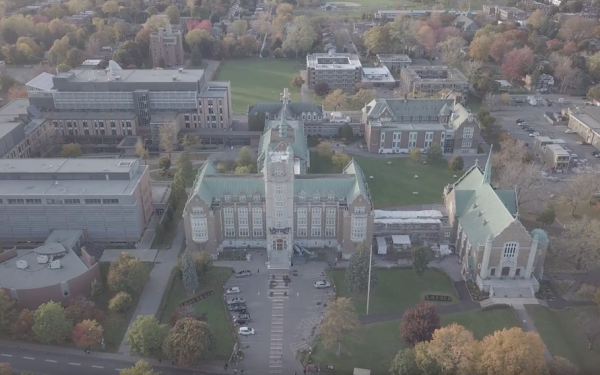How AI Can Predict the Recurrence of Lung Cancer
Quebec Researchers and Patients Hoping for Alternatives
After undergoing an upper left lobectomy for stage 1 non-small cell lung cancer (NSCLC) as a non-smoker in 2016, Tim Monds’ routine CT scans continued to confirm the same results—all clear, no cancer. “I was recovering, I was doing great,” he said.
Two years later, Monds received some difficult news. “Three weeks after I retired, I was feeling great,” he said. “I did my CT scan and they found 11 new nodules.”
Months after he had two nodules removed, it was confirmed that Monds’ cancer had returned—this time at stage 4.
Lung cancer is the leading cause of cancer-related deaths in Canada, and recurrence is common. In the hopes of better predicting lung cancer recurrence researchers at McGill University’s Rosalind and Morris Goodman Cancer Institute (GCI), Université Laval’s Institut universitaire de cardiologie et de pneumologie de Québec (IUCPQ) and the Research Institute of the McGill University Health Centre, used artificial intelligence as a diagnostic tool.
The research profiled the cells and organization of the tumour’s environment in small tissue samples of over 475 NSCLC patients using highly multiplexed imaging—a technique used to visualize more biomarkers simultaneously in tissue samples.
Logan Walsh, lead researcher at the GCI and professor in McGill’s department of human genetics, explained the images used in highly multiplexed imaging are fed into the artificial intelligence model. “We use a subset of the images to train the model and then based on the images alone, the model can predict clinical outcomes,” he said.
According to Philippe Joubert, thoracic pathologist at the IUCPQ, AI predicted whether a patient’s NSCLC is likely to recur after surgery with around 95 per cent accuracy. “Currently, in a clinical setting, we do not have any predictive tool that is as effective,” he said in a press release.
Highly multiplexed imaging can be impractical when translating discoveries into accessible clinical assessments because it uses a larger number of markers than clinical pathology practice.
To solve this problem, they reduced their panel to five markers for the AI model, which is more responsive to clinical pathology practice. By incorporating the spatial information with the spatial organization of the cells in the tumour, researchers discovered the accuracy to predict a patient’s recurrence was similar in the two models: from 93.3 per cent to 95.6 per cent.
“The spatial organization of the cells within a tumour are paramount, and perhaps more important than the abundance of the cells in the tumour microenvironment,” said Walsh.
Walsh believes it’s only a matter of time before the use of AI becomes more prominent in medical diagnosing. "I think it's inevitable AI will play a part in routine clinical decision making in the near future,” he said.
It remains uncertain when this technology will be implemented.
Monds feels the implementation of diagnostic and treatment advancements can be a bit of a waiting game for patients, but he believes technological advancements are headed in a positive direction. “I am a believer in science, and I am absolutely optimistic about the things that are happening,” he said.
Monds is hopeful about the future for lung cancer patients and feels well as he finishes his immunotherapy. He continues to advocate, fundraise and raise awareness for lung cancer with Give a Breath. The charity’s National Walk will take place across Canada in person and virtually on June 3. He urged those inspired by his advocacy to support the cause.
“We have to have hope,” he said.


_600_832_s.png)




